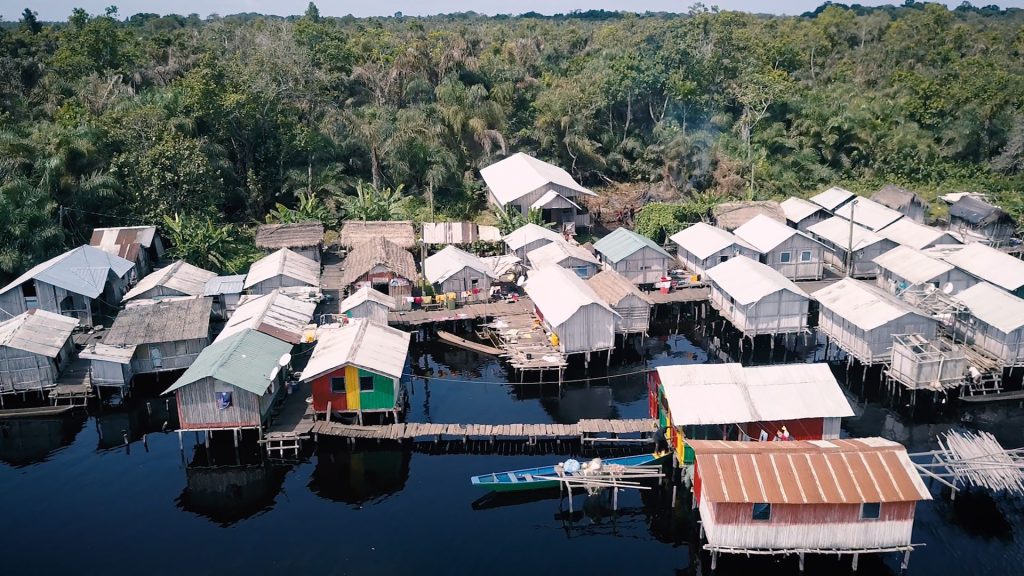As promised, here is part two of the heritage of the township of the oil city in Ghana, Takoradi located in the Western parts of the country.
The popular Nzulezo is a village located near the village of Beyin, 90 kilometers west of Takoradi, in the Jomoro District jomoro the Western Region of Ghana.
Nzulezu overlooks Lake Tadane and is entirely made up of stilts and platforms. In 2000, it was nominated as a UNESCO World Heritage Site and is a major tourist attraction area.
History
The name “Nzulezo” in the Nzema language means “water surface”, and is a village on stilts of “Ewuture” origin situated close to the northwest shore. The “Ewuture” maintained the waterways and transportation of goods and people. According to legend, the village was built by a group of people from Oualata, a city in the ancient Ghana Empire and in present-day Mauritania, which came about from following a snail. The snail is therefore a totem and is revered by the people of Nzulezo.
The village was nominated to become a World Heritage Site for its importance in anthropology: in addition to being one of the few ancient settlements on stilts and platforms left in the world, there is a preserved wealth of local traditions connected with the cult of the lake. Lake Tadane occurs on the banks of all religious rites, and Thursday, is a day sacred to the lake, and it is forbidden to use and work on the lake for any activity throughout the day of Thursday.
Construction
Nzulezu was built over Lake Tadane consisting of stilt-supported structures. The reason Nzulezo was built over the water was for protection and safety during attacks in times of war since it lies five miles inland of the Southwest shores. The main activity of its inhabitants is agriculture, while fishery plays a secondary role. The lake is perceived by the local population to protect against certain risks (e.g. a fire).
Education
There is a primary school and after primary school learners have to leave the village to go to secondary schools and universities.
Nzulezo Canoe Transport
In recent times the village has been opened to tourism, but with certain constraints (visitations are allowed only once a week). The village can be reached only by canoe; the route, which crosses the rain forest, takes about an hour to 5 km away. In the village, there is a church and a school. As the village is extremely isolated, Nzulezo suffers from numerous health problems, including the vast spread of malaria
Axim is a coastal town and the capital of Nzema East Municipal district, a district in the Western Region of South Ghana. Axim lies 64 kilometers west of the port city of Sekondi-Takoradi in the Western Region to the west of Cape Three Points. Axim has a 2013 settlement population of 27,719 people.
This area was occupied by the Nzema people. The Portuguese arrived by the early 16th century as traders. They built a prominent seaside fort, Fort Santo Antonio, in 1515. They exported some Africans as slaves to Europe and the Americas. Between 1642 and 1872, the fort was expanded and altered by the Dutch, who “ruled” during that period. The fort, now the property of Ghana, is open to the public. Off-shore is some picturesque islands, including one with a lighthouse.
Structure
The town of Axim is divided into two parts: Upper Axim and Lower Axim. Fort Santo Antonio lies roughly on the division between the two parts, but is closest to the center of Upper Axim, the original European settlement. Here, several large mansions of lumber-trading magnates and other businessmen remain from the late 19th century and the period of the British empire. Axim is governed by a political District Executive of the Nzema East Municipality.
Economy
Fort Santo Antonio in Axim
The economy is based mainly on Axim’s fishing fleet, but the area also has three tourist beach resorts as well as coconut and rubber plantations. The scenic and fertile terrain features many palm trees. Local artisanal miners pan for gold in streams inland from Axim. Axim has a transport station, two major bank branches, and some rural banks including the Ahantaman Rural Bank, Nzema Maanle Rural Bank, and Lower Pra Rural Bank.
Culture
Every August, the major festivals of Kundum take place, coinciding with the best fishing catch of the year; people come to Axim for the festivities and to fish and trade.
Tourism
There is a wonderful beach in Axim. The very place around the beach, perched on a hillside, is an exuberant nature that has no equal in Ghana. The waves of the beach are strong and suitable for surfers.[3]
Renowned legends
January Conny, known by many names, of which the best-known is John Canoe, was an Akan warrior and chief of the Ahanta people, an ally of Brandenburg-Prussia against the British and the Dutch, in the Brandenburger Gold Coast colony (1683–1720) in Axim. His true name has been lost to history, although the name Kenu is an authentic Akan name.
Anton Wilhelm Amo (1703–1756), was the first black African to receive a philosophical education in Europe and to publish philosophical works there and in Germany. He published “The Rights of Moors” (among other works) and taught philosophy at the University of Jena
SOURCES
Nzulezu Stilt Settlement – UNESCO World Heritage Centre
https://touringghana.com/nzulezo-stilt-village/
http://nzemaeast.ghanadistricts.gov.gh/


